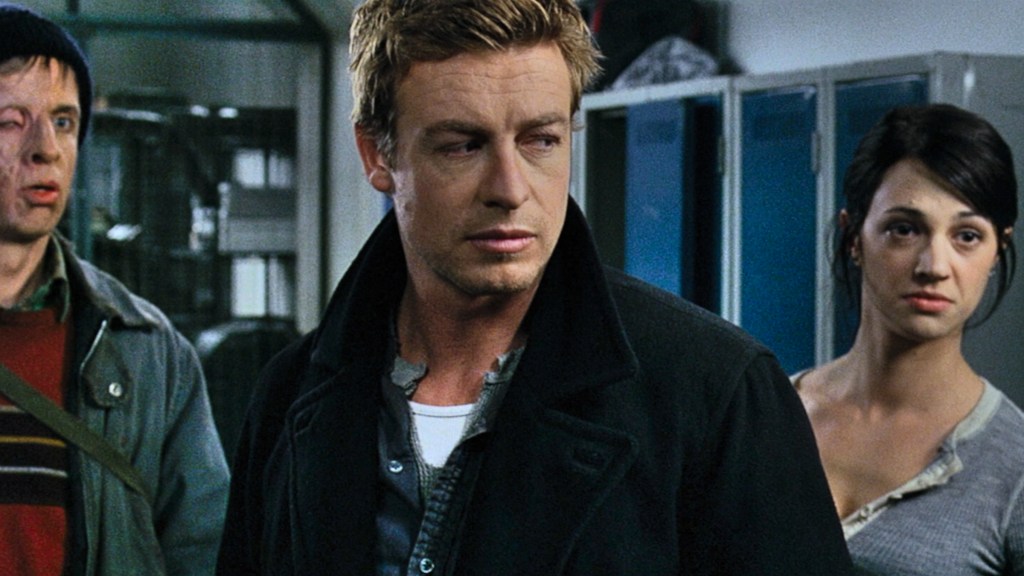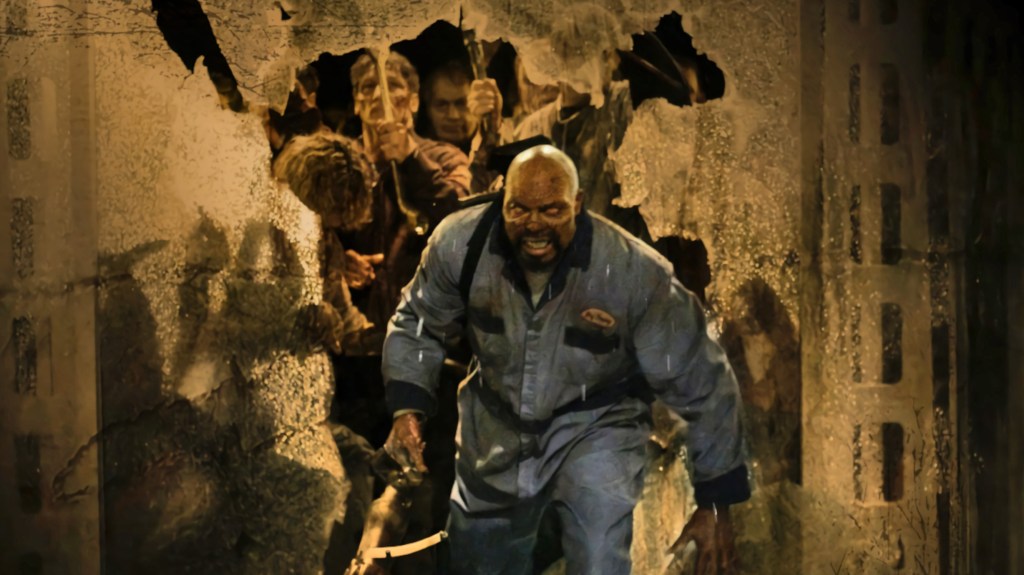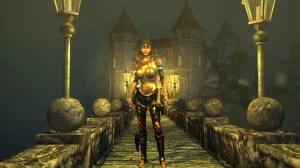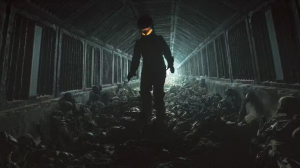On June 24, 2005, Horror master George A. Romero released the most ambitious movie of his career. Land of the Dead not only had a bigger budget than any of Romero’s other films but also bigger ideas. The support of a major studio allowed the director to expand the scope of not only the zombie apocalypse but also his signature social commentary. On top of that, the movie was well-received critically and even turned a profit. Yet, here we are with the movie’s 20th anniversary just around the corner, and practically nobody is talking about it, even though it’s one of Romero’s better movies.
Videos by ComicBook.com
Two decades on, Land of the Dead seems like George Romero’s forgotten magnum opus. Land feels like the culmination of everything George was trying to say with his first three movies, but somehow gets overshadowed by what came before and after. Despite being able to hold its own against George’s other zombie movies, Land of the Dead is very much the neglected middle child of the Dead series. It holds an interesting place in the Romero pantheon as a bridge of sorts between the director’s best work and his worst.
While none of Romero’s zombie movies are sequels in the technical sense, Night of the Living Dead, Dawn of the Dead, and Day of the Dead are often considered a trilogy. Much like the original Star Wars trilogy, you have the groundbreaking original that spawned a whole genre, the superior sequel that improves on the original in almost every way, and the third film, which some fans consider a step down from the second but still largely enjoyable.
By contrast, Romero’s final two dead films, Diary of the Dead and Survival of the Dead, are disappointing, low-budget direct-to-video affairs that rely heavily on bad CGI and are looked down upon by even hardcore Romero fans. And then there’s Land of the Dead.
Land of the Dead Was A Big Swing, And It Worked

As stated above, Land of the Dead is George Romero’s biggest movie in terms of budget and scale, something it owes to the zombie renaissance of the 2000s. Romero created the idea of zombies as flesh-eating corpses, a concept that even the director admitted was traditionally associated with ghouls. The first wave of Romero-inspired zombie movies peaked midway through the ’80s and then slowly faded away as the ’90s focused on reviving the slasher genre.
Then 2004 rolled around, and with it came a renewed interest in the undead cannibals, thanks to a trio of films: 28 Days Later, Shaun of the Dead, and the Dawn of the Dead remake, all released around the same time. With zombies suddenly hot again, it only made sense for someone to give the father of the genre a chance to make a new film. Romero first went to 20th Century Fox, who insisted on calling the film Night of the Living Dead: Land of the Dead and on the ownership of the franchise. Romero passed and instead made a deal with Universal Pictures.
Why Romero, who once passed up an offer to make Day of the Dead R-rated for $7 million in favor of a $3.5 million budget and all the gore he wanted, suddenly wanted to work under the constraints of a Hollywood Studio is anyone’s guess. Most likely, the allure of finally having enough money to make the movie he wanted to, without having to compromise for budgetary reasons, was too much for Romero to pass up. That and, of course, the knowledge that he would be able to release an unrated cut of the film when it was released on DVD.
So what did Universal get for their money? An action movie with buff heroes running around carrying big guns and mowing down hordes of snarling zombies? A thriller starring a big-name actor trying to find a cure for the zombie virus? Try a thoughtful commentary on how society treats the poor and downtrodden.
In Land of the Dead, those in charge have given up on trying to cure the zombies or even eliminate them altogether, in favor of simply ignoring the problem. In a plot that has aged like fine wine, Pittsburgh’s wealthy elite have built a wall around the city that allows them to forget about the zombies the way they would the poor and unhoused. You can imagine how well that works out for them.

Land of the Dead is less about eating flesh and more about eating the rich. While Romero’s movies have always explored deeper themes through zombies — race relations in the ’60s, consumerism, the military-industrial complex — Land of the Dead is his most overtly political film. In a world where the dead are walking around with rotting meat falling off their bones, Romero has rich slimeball Kaufman kill a man over money.
Make no mistake, Land of the Dead has action — a giant zombie-killing tank named Dead Reckoning is a major plot point — and enough blood and guts to satisfy gorehounds. It’s just that, like all of Romero’s Dead films, the violence and mayhem are secondary to his critique of humans as a species. It may be cliche now, but “The humans are the real bad guys” is practically the mantra of Romero’s undead saga.
A larger budget also meant Romero could hire known actors for a change. Nothing against Duane Jones, Ken Foree, or Joseph Pilato, but what little name recognition they have is a direct result of starring in George Romero’s movies. Dennis Hopper and John Leguizamo, on the other hand, brought a bit of star power to Land of the Dead that the other films lacked. Not enough to make the film feel like a slick Hollywood production — much to the movie’s benefit — but having character actors of that caliber does raise Land of the Dead‘s pedigree somewhat.
Why Land of the Dead Has Become An Obscure Release

While it would be hard to call Land of the Dead better than Night of the Living Dead or Dawn of the Dead, it’s easily on par with Day of the Dead and deserves to be held in a similar regard. So why isn’t Land of the Dead more popular in the horror community? Honestly, it’s a case of being in the wrong place at the right time. The above-mentioned zombie renaissance was somewhat short-lived. By 2005 the so-called “torture porn” genre was dominating horror. Hostel, Saw II, and The Devil’s Rejects all came out the same year as Land of the Dead and signalled a shift in horror antagonists from supernatural monsters to sadistic humans. After a brief moment in the sun, zombies were being driven back into the shadows of low-budget straight-to-video and made-for-cable schlockfests, where some might argue they belonged the whole time.
Meanwhile, film in general was starting to be dominated by superheroes. Despite the MCU still being a few years off, 2005 saw the release of at least seven big-budget comic book movies, ranging from Batman Begins and Fantastic Four to Sin City. Add a major Star Wars release, Revenge of the Sith, to that, and it’s easy to see how the moviegoing public could largely forget Land of the Dead. It’s a shame because in 2025, Land of the Dead is George Romero’s most relevant film. Its themes speak to the current political climate as much as they did twenty years ago, perhaps even more.
Ultimately, Land of the Dead is a large-scale zombie epic on par with George Romero’s best work and deserves to be watched by every horror fan at least once. You can stream Land of the Dead right now on AMC+.








